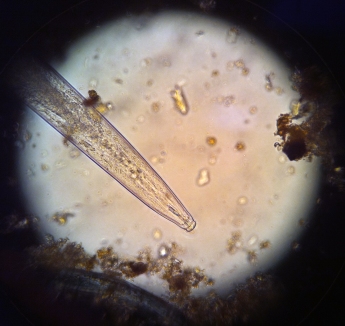Water in winter is a precious commodity. At first thought, this doesn’t make a lot of sense, here in Vermont the ground is covered in snow, which is, after all, merely water in a specific phase state. Despite this being a meager winter in terms of snowfall, there is between 1 and 8 inches of snow, depending on where you are, on the ground near my house in northeastern Vermont.
The problem is three fold, 1) that phase state issue. Snowflakes are delicate ice crystals, and ice has a Mohs hardness of around 1.2-2 at normally cold temperatures. This is harder than chalk and talc. Ice acts as a soft rock. 2) Humidity, the ability of the atmosphere to hold water is dependent on temperature. The same relative humidity at different temperatures means very much less total available water at a colder temperature. At cold temperatures things dry out quickly, which is part of the reason deciduous trees drop their leaves, and why other plants cover their leaves in waxy coatings or thick layers of hair. 3) the ground is frozen, locking up surface water and making it unavailable to plants and animals.
These factors combine to make winter a stressful time for plants, but for animals the cold makes it even more difficult. Animals have several options for dealing with cold; they can hibernate, dropping their temperatures and metabolic needs to a bare minimum and wait out the difficult times; they can insulate themselves with layers of fur or fat to protect from the cold; or they can ramp their metabolism up to generate more heat. The problem is that generating heat via metabolic activity takes water… where do you get it in the winter?
Today was a warm winter day in my portion of Vermont, somewhere in the high 20s, and the snow had melted away some since the last snowfall. About 50 feet behind my house I came across the tracks from a fisher that had been hunting several days earlier.
Being inquisitive, I followed the tracks.
In typical mustelid fashion they wandered semi-randomly across the landscape, but, as I followed them, more and more tracks came together, making a veritable highway of frozen tracks in the snow.
More and more tracks came together, both of fisher and of deer, coyote, and bobcat. Clearly I was onto something, but what?
At first, when it was just fisher tracks, I had been hoping to find a den. If I could find a den, I might be able to justify finally buying a game camera, something I have wanted for a long time. I found a dead sugar maple that might be a den, but as I continued exploring, that was not where the greatest number of tracks was. Maybe I would find a kill site. A scattering of porcupine quills or several puffs of squirrel fur.
Nothing of the sort greeted me, but what I did find was a small frozen pond fed by ground water and surrounded by tracks and scat from all sorts of animals.
Ground water, that is the key. The earth has tremendous thermal mass. Thermal mass is a sort of battery or reservoir of heat (there really is no such thing as cold, it’s all varying degrees of heat, with no heat being 0 kelvin, or absolute zero). In my region of the US the ground stays at a relatively constant 50 degrees F. In the hot and humid summers that means all the rocks sweat, condensation forming on their (relatively) cold surfaces, and well water is refreshingly cool to drink and chilly to bathe in. In the winter this means that seeps and springs stay running and liquid all winter, and well water feels deceptively warm (though still chilly to bathe in).
The fisher I had been following was heading to a source of water, water that drew numerous other animals, including a bobcat that left scat at the base of a hemlock tree and probably hunted the other animals that came for water.
The fisher I had been following, and, perhaps several others, has spent quite a lot of time at this pond. The tracks were melted into the ice all around where the liquid water came into the pond.
Even in a place as water rich as Vermont, water can still be a precious commodity.







